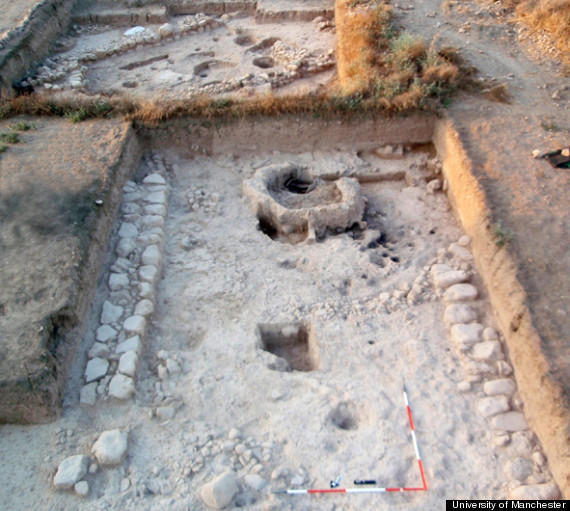Archaeologists in western Cyprus are shedding light on ancient boozing after the discovery of a "microbrewery" dating to the Bronze Age, about 3,500 years ago.

The excavation includes a mud-plaster domed structure, which is thought to have been used as a kiln to dry malt. Variously flavored beers would have been brewed from the substance and fermented with yeasts, which may have been produced from grapes or figs. The resulting brew may have had an alcohol content of about 5 percent.
The University of Manchester's Dr. Lindy Crewe led the excavation, ongoing at the Early-Middle Bronze Age settlement of Kissonerga-Skalia since 2007. The discovery, she said, is quite significant:
"Archaeologists believe beer drinking was an important part of society from the Neolithic onwards and may have even been the main reason that people began to cultivate grain in the first place. ... 'But it's extremely rare to find the remains of production preserved from thousands of years ago so we're very excited."

Crewe and her team also uncovered grinding tools and mortars that may have been used to break down the grains after they had undergone the malting process, a small hearth, cooking pots and juglets, which likely contained yeast additives or beer sweeteners.
Adding fuel to the fire, beer ingredients like carbonized seeds were found on site.
The Telegraph writes that a team from Heritage and Archaeological Research Practice decided to put Crewe's theory about the kiln to the test, and set to brewing a Bronze Age beer by recreating a similar structure and employing traditional brewing techniques. Ian Hill, who led the effort, said that the resulting brews "were all pretty drinkable."
The Huffington Post reached out to the University of Manchester, who passed along the recipe for one of the brews, which they've named Kissonerga-Skalia Pale Ale. Fair warning, it sounds a bit complicated. We suggest you have an expert on hand before you attempt making it.
Ingredients:
1.5 Kg fresh, wild barley
5 large, wild figs (unwashed)
Plenty of water
Steps:
- Using a porous sack, soak 1.5 Kg of the barley grains in cool running water for 24 hours. A fresh running stream is ideal.
- Drain the grains and remove any unwanted stalks etc. Spread the grains evenly inside a semi-porous container (a shallow pottery vessel or wooden bowl for instance) and cover the container with a damp cloth and place the container out of direct sunlight.
- Uncover every 6 hours to stir the grains, so to avoid overheating and moulding and repeat until germination phase is complete (usually 3-4 days).
- Once the grains have germinated they are ready to malt. Split open a grain to check the germination, once the inner shoot of the grain has grown to around 75 percent of the length of the grain they are ready.
- To malt the grain place in open containers and put them into the bottom of your drying kiln, once positioned fire up the kiln and maintain a steady fire for 24 hours. This will produce a steady temperature of around 60°C for malting your grains to produce a pale malt.
- Once malted take your grains and crush using a quern stone and grinder, the grains should be crushed in order to open them and allow liquid so that sugars can be absorbed, but not crushed so much as to make flour.
- Heat 3.75 litres of water in a large cooking pot to between 65°and 70°C. Add the crushed malt and stir through. Cover the vessel and remove from the heat, but ensure that the temperature does not fall below 65° or above 70°C (if necessary add cold or hot water to help maintain the temperature) and leave to mash for 90 minutes.
- Heat a further 3.75 litres of water to 75°C in a separate cooking pot and prepare a third, sealable, vessel which will be used to ferment the beer in.
- Once the mash is complete strain the contents of the mash through a porous material, such as cloth, into the fermentation vessel. The grains will be held in the cloth whilst allowing the sweet liquid wort to drain into the fermentation vessel. To get the maximum amount of sugars from the grain and into the wort take the second vessel of heated water and pour over the grains to drain into the fermentation vessel.
- Once the fermentation vessel is full, heat to a high temperature to kill any germs or bacteria. The wort must then be cooled by placing the fermentation vessel into cold water (being careful not to let any of the water into the vessel).
- Once the wort has been cooled take the figs and gently crush them in your hand before placing them inside the fermentation vessel. Seal the fermentation vessel and leave in a cool place, out of direct sunlight for 5-6 days, by which time your beer will be ready to drink.
